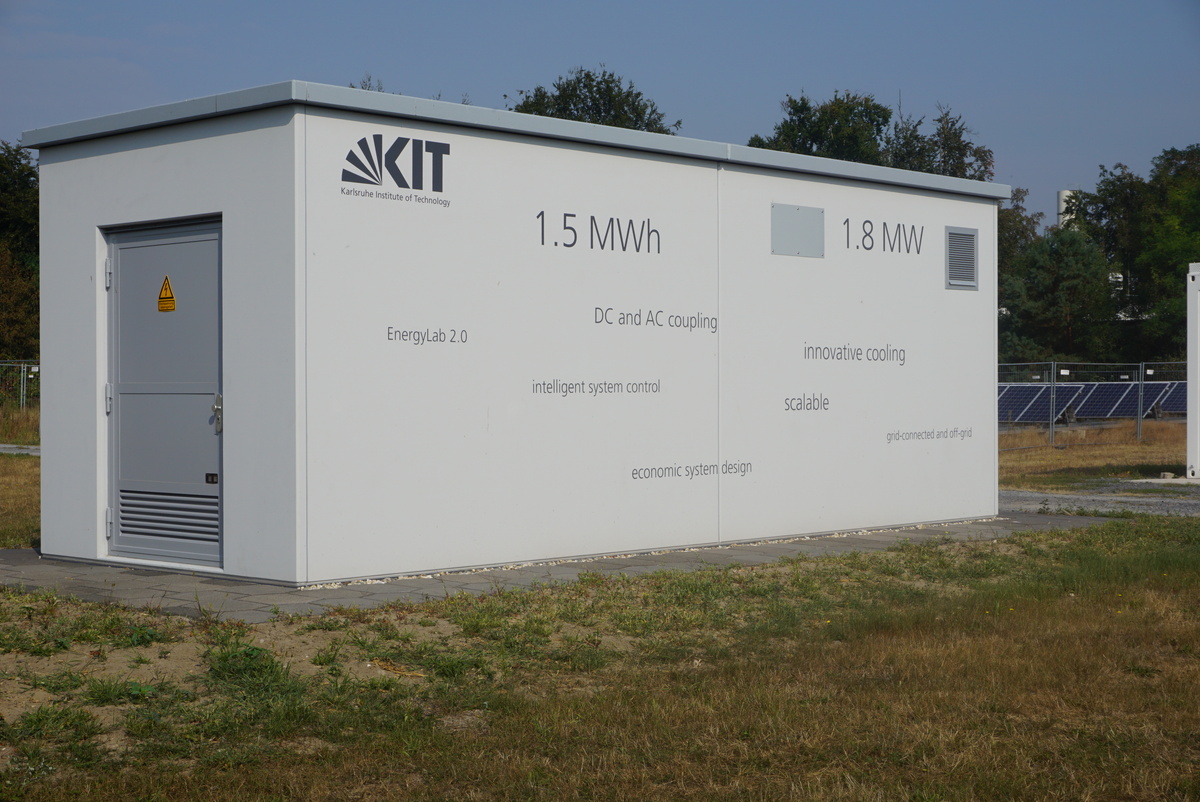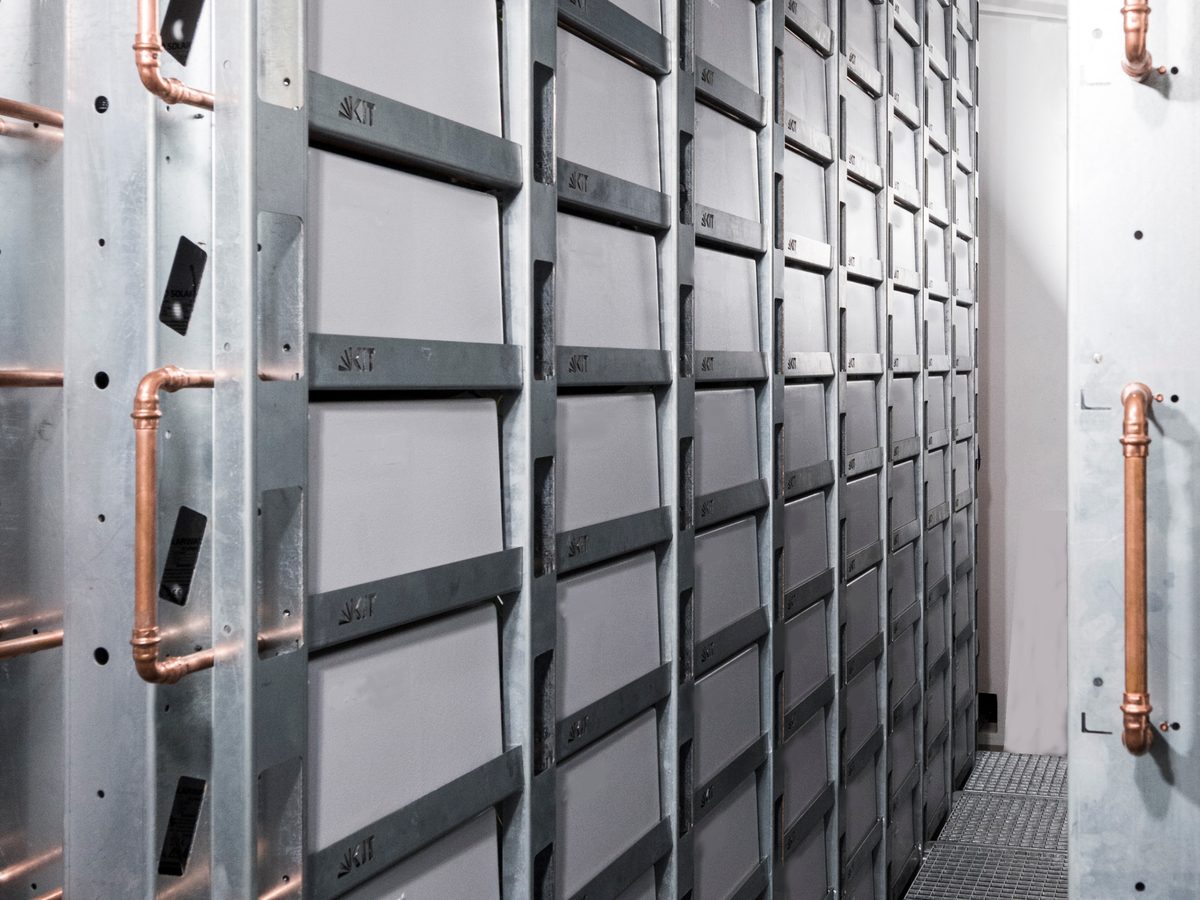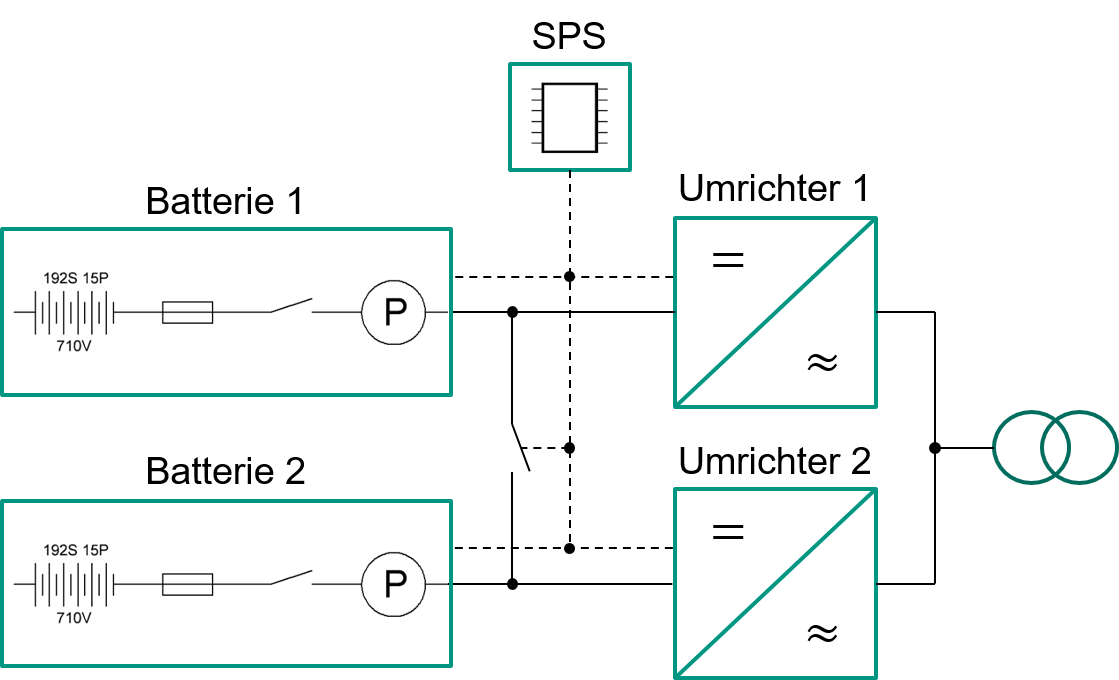Large-scale Storage System with Innovative Cooling Management and Economical Design
Energy Lab 2.0 is a large-scale research infrastructure for the research on the interaction of components for future energy systems and the testing of new approaches to stabilizing energy grids. As part of Energy Lab 2.0, the Battery Technical Center is developing a near-series prototype of a 1.5 MWh lithium-ion storage system and consists of 608 battery modules. With a nominal DC voltage of 710 V, up to 800 kW of electrical power can be achieved.
The thermal component activation of the concrete building as well as the use of the groundwater for temperature control of the batteries allow minimization of the operating and maintenance costs of the system and ensure a long lifespan. The required space for storage systems is reduced by the proportionate sinking of the building into the ground. The acceptance of the building as a storage facility in residential areas is enhanced by the attractive design. The robust building also makes the system suitable for installation under unfavorable weather and adverse environmental conditions. The hardware, if equipped with the appropriate software packages, is suitable for variable applications. This includes the primary operating reserve to compensate volatile-generated (i. e. time-, location- and weather-dependent) electrical energy or industrial applications (compensation of peak loads). The storage system is scalable in its rated power and storage capacity. Therefore, various requirements can be met.
The idea of the cooling concept is the indirect water cooling of the battery modules. The battery modules are positioned directly on the tubes of the cooling circuit. The heat loss of the Li-ion cells and the battery management system is transferred directly to the coolant. Boreholes for transferring the heat to the groundwater are part of the cooling circuit. Compared to conventional systems, this system significantly reduces the required energy for cooling the battery storage.
Contact: B.Eng. Michael Mast, M.Sc. Bernhard Schwarz
Further information




